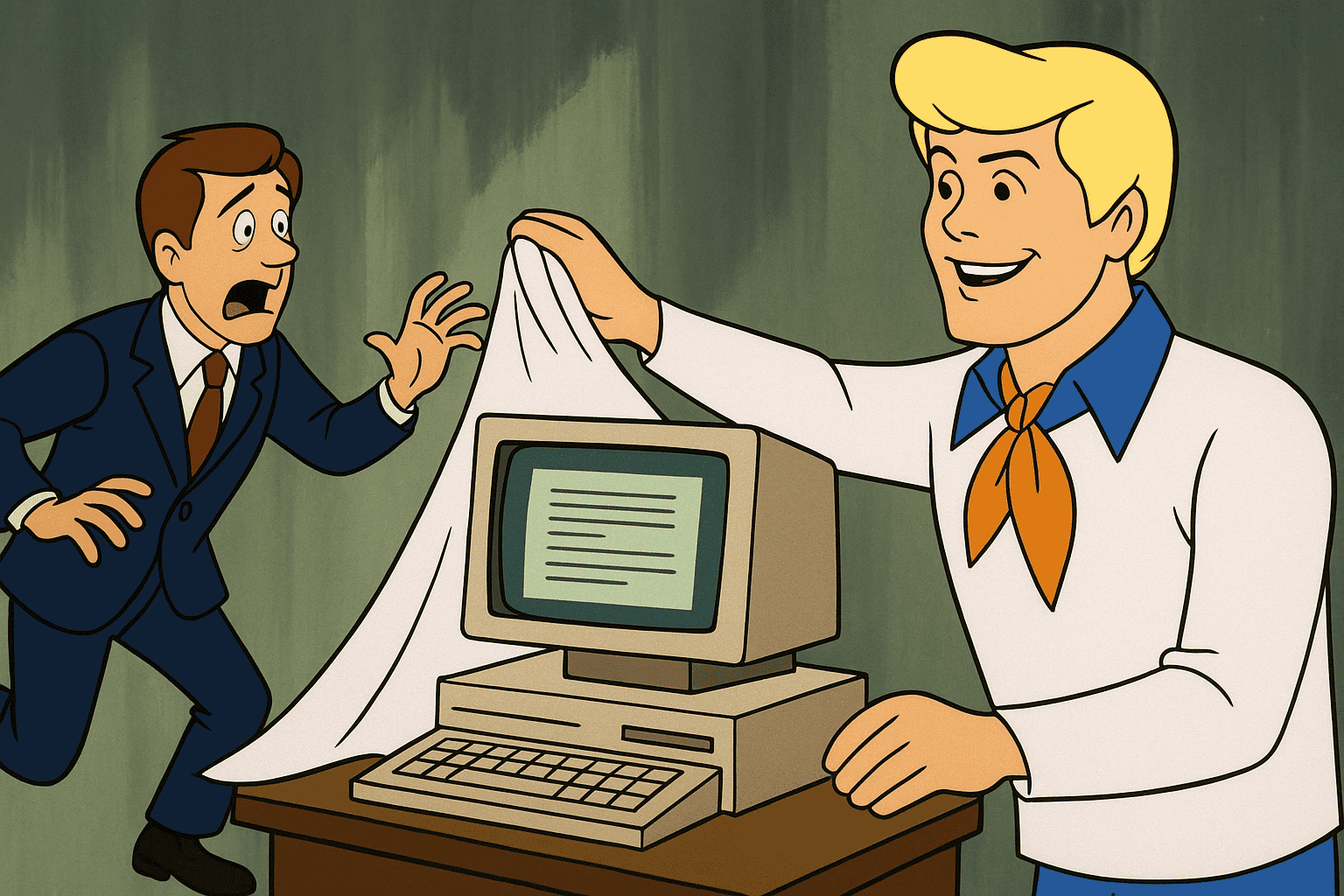Change is a people problem, not a tech problem

Enabling digital transformation success: why people are at the center
Implementing new software or systems is often the easy part – the real challenge is changing how people work, think, and interact with that technology.
According to McKinsey, 70 percent of digital transformation projects fall short of their goals, while Gartner research indicates that less than half – just 48 percent - achieve or surpass their intended outcomes. These widespread failures in transformation efforts result in approximately $2.3 trillion in annual losses for businesses worldwide. And they are, in large part, due to human and cultural factors rather than technical ones. It’s no wonder experts say digital transformation success hinges on addressing the human side of change. The lesson is clear: to de-risk any big transition, we must put people at the center.
This is especially true in domains that deal with large volumes of complex, critical documentation – from manufacturing manuals and medical procedures to software product guides. In these environments, content might be reused across dozens of documents and languages, updated constantly, and delivered in multiple formats. Adopting structured authoring or a Component Content Management System (CCMS) can revolutionize how such content is managed, by acting as the central repository for organizational information, delivering optimal knowledge flow across the business. But without a human-centric approach, even the best tools will stumble.
Resistance stems from fear, not functionality
Whenever a new technology or process is introduced, some level of resistance is almost guaranteed. It's easy to mistake this pushback as stubborn loyalty to "the old way" or complaints about missing features. But at the heart of most resistance is fear. As change management expert Val Swisher observes, it's not usually about being obstinate or technophobic, it's fear in disguise.

Employees may fear not understanding the new system, fear that asking questions will make them look bad, fear they'll fail at the new workflow, or even fear losing their jobs if they can't adapt. Research in psychology backs this up: many people don't inherently dislike new technology, they're afraid they won't be able to adapt to it, which ultimately drives an unwillingness to change.
Recognizing this fear is the first step to managing it. If you approach a resistant colleague as simply "difficult" or stuck in their ways, you'll likely respond with frustration. But if you recognize the fear behind the resistance, you can respond with empathy and support, addressing the root cause. Instead of pushing harder or dismissing concerns, you might provide extra training, one-on-one guidance, or a sandbox environment to practice in. By putting up "guardrails" – easy access to training, a safe place to ask questions, and other support – you can often turn your most resistant person into an enthusiastic champion of the new system.
It's also crucial to communicate the "why" behind the change. People handle change better when they understand the purpose and benefits. If the team knows why a structured approach is needed - say, to eliminate the inconsistency and redundancy that currently frustrate everyone - they're more likely to move past fear and consider the possibilities.
Real-world example: When CommScope, a global communications technology company, set out to unify multiple documentation teams onto a single structured content platform, the biggest challenge wasn’t the technology – it was convincing all the teams to get on board. Many had been using their own tools for years. As a stakeholder noted, “Resistance to change and a reluctance to relearn how to do things on new systems can present stumbling blocks that are difficult to overcome.” The only way forward was to demonstrate the value of the new system quickly and clearly. In other words, they needed to ease the fears (‘Will this be too hard? Will it really be better?’) by showing early wins and making the benefits tangible. We’ll explore how they did that next.
Familiar interfaces and incremental wins build confidence
How do you take a team that's nervous about a new way of working and inspire confidence? Two strategies consistently prove effective: make it familiar, and make it gradual.
Make it familiar

One barrier to adoption is when the new system feels alien. If authors are used to Microsoft Word's interface, dropping them into a raw XML editor will almost certainly trigger panic. But if you implement technology that looks and feels familiar on the surface while the scary, complex processes are managed behind the scenes, then you’re onto something.
CommScope chose a CCMS that offered an intuitive, user-friendly editor. During their evaluation, they found that "Tridion Docs was the most intuitive and easy-to-use system for its employees." This was critical because not all users were technical writers, and through a web-based interface, even non-technical staff could edit content in a UI familiar to them – very much like a standard word processor.
By giving casual users a Word-like experience, CommScope lowered the psychological barrier to entry. People could engage with structured content without needing to learn XML syntax or complex tagging. This approach even gave other departments more control over their own content updates without having to ask the core tech writers for every little change, making the workflow “a much more efficient way of working”. In other words, familiar tooling can turn a daunting change into something that feels like “just an improved version” of what people already know.
Make it gradual

The second strategy is to avoid the dreaded "big bang" implementation where everything changes at once. Research supports the wisdom of an incremental approach. Neuroscience expert Beau Lotto points out that abrupt, radical shifts tend to trigger resistance and disruption, whereas incremental change works because it mirrors how our brains naturally adapt – small changes are easier to absorb and adjust to.
In practice, this means phasing the transition into structured content and celebrating quick wins along the way. Rather than converting all content and processes in one go, you might start with one product line, one department, or a pilot project. Prove that it works on a small scale; let the team iron out kinks and see improvements first-hand.
Early "small wins" are powerful. They generate momentum and dispel skepticism. Each success – say, a user manual update that used to take two weeks now done in two days thanks to content reuse – builds confidence in the new approach. When people see a new system solving their daily headaches in even a minor way, they become more open to the next change, and the next.
CommScope leveraged their RUCKUS Networks team, which was already experienced with structured authoring, as a pilot and internal champion. The RUCKUS writers could show their colleagues concrete examples of how structured content made their jobs easier, thus demonstrating value and building confidence among the other teams. By the time they extended the CCMS to all documentation groups, "everyone was fully equipped with the right tools and knowledge to get started right away."
Structured content authoring: gaining clarity and scalability, not losing control
One common worry among writers and subject matter experts when they hear about "structured authoring" is the fear of losing control. The prospect of using a structured system can conjure images of rigid rules, cookie-cutter outputs, or creativity stifled by XML tags. Realistically, structured content authoring doesn't mean giving up control of your content, it means gaining a higher level of control, along with clarity and scalability that were impossible to achieve before.

Consider what unstructured document creation actually entails. Using conventional tools, individual authors have near-total freedom over formatting and structure - which also means no enforced consistency. Each person "does their own thing," and while that may feel like control on an individual level, for the organization it often results in a loss of control over the content ecosystem. Important information might be duplicated in 17 different documents (and updated in only 15 of them), critical warnings might be phrased 5 different ways, and formatting errors can slip in easily.
Structured authoring flips this script. It introduces a consistent framework and governance that may feel strict at first, but this framework is precisely what delivers clarity and large-scale coordination. With structured content, every piece of information has a defined place and format - not to constrain writers, but to remove ambiguity for readers and to make content machine-readable and reusable.
Crucially, structured authoring enables scalability that simply isn't possible with ad-hoc methods. When content is chunked into components and managed centrally, you can reuse one approved chunk across dozens of documents with a click. You can update that chunk once and have the change propagate everywhere, with full confidence that no instance is missed. You can also publish to any format or language from the same source, because the content is format-neutral until output. This means a small team can manage an ever-growing body of content without losing sanity – the system scales with you. That’s real control: control over accuracy, control over consistency, and control over effort, because you’re not exponentially growing your workload with each new document or language. As a slogan in the content world goes, it’s about creating content once and using it everywhere, rather than recreating it everywhere.
Success stories turns skeptics into believers
Still, how do we convince skeptical team members that this is a gain, not a loss? One effective way is to highlight success stories where structured authoring empowered content creators.

A global software provider made the leap from unstructured docs to a DITA XML component content system. Initially, some writers were concerned they'd be constrained by templates and rules. The transition came with a steep learning curve and growing pains, but once the dust settled, the documentation team experienced an eye-opening shift.
As the principal documentation manager described, "Switching to structured content wasn't easy or quick, but it was absolutely the right decision." Now, they finally have control over how content is structured, delivered, and displayed in ways that were impossible with their old setup. By leveraging metadata and a modular architecture, they can dynamically filter and personalize documentation for different audiences – ensuring each user sees exactly the content they need. Their documentation website went from frequently unreliable to a robust, user-friendly portal that got rave reviews for findability.
What felt like "losing control" at the outset (because writers could no longer freestyle every document) turned into better control over the entire content universe – with clarity, consistency, and scale. The writing quality didn't suffer; if anything, it improved because writers could spend more energy on communicating clearly rather than wrestling with formatting or worrying whether a change was applied everywhere it needed to be.
"Switching to structured content wasn't easy or quick, but it was absolutely the right decision."
Structured authoring also fostered a more collaborative but controlled environment. The system enabled other departments to contribute directly to the content repository through an easy interface. Far from causing chaos, this shared access was governed by the CCMS – everyone worked on the single source of truth with appropriate permissions. Those teams felt more ownership and autonomy, yet the company's content quality remained high and centralized. It's a bit like moving from lone cooks in separate kitchens to a well-orchestrated kitchen brigade – each person has their station and duties, and together they deliver a far better meal to the customer, faster and with repeatable quality.
In sum, structure is not the enemy of creativity or ownership – it's the enemy of chaos. The key is to help your people see structured authoring as a support system rather than a straitjacket. When the pain of the old way is contrasted with the streamlined nature of the new way, light bulbs start to go off. Those are the kind of outcomes that turn skeptics into believers.
“The new system completely transformed the way we think about docs – we got standardization, versioning, reuse, and review workflows all working better, and we could deliver more content faster than ever before.”
Making the transition a human-centered success
Ultimately, any major change in how content is created and managed comes down to people. You can have the most powerful technology in the world, but if your team doesn't adopt it, the project will fail. The good news is that when you do win the human side of the equation, technology can deliver its promised benefits in abundance.
Start with leadership and vision
Be clear about why the change is happening and communicate that vision relentlessly. People need to see the purpose behind the disruption. Don't just speak in buzzwords – connect the change to personal value for employees. For example, "This new CCMS will free you from the grunt work of updating 50 files manually so you can focus on writing great content." Frame the change in terms of how it benefits them, not just the company in abstract terms.
Involve people early and often
Change shouldn't be done to the team; it should be done with the team. Identify change champions or early adopters and empower them to lead by example. Encourage open feedback, and truly listen to concerns. This inclusive approach builds trust. When people feel heard and see their input reflected in the outcome, their buy-in increases dramatically.
Don't skimp on training and support
Provide practical, role-specific training on the new tools and methods. Ensure there are resources available: quick reference guides, a help channel for questions, maybe a "buddy system" pairing an early adopter with a less confident colleague. Celebrate the learning milestones as much as the technical ones - when your team completes training or successfully publishes their first structured document, acknowledge it.
Be patient and persistent
Changing habits takes time. There will be moments of friction - maybe the first big project in the new system takes longer as everyone climbs the learning curve. This is where leadership needs to stay committed and not panic. Sustainable change takes time, consistency, and clear communication. Keep reinforcing the vision and highlighting progress, no matter how small it is.
Conclusion
Technological change in content operations is as much a cultural journey as a technical one. By addressing the human factors - fear, confidence, ownership, and understanding - you dramatically increase your odds of success. When you lead with empathy, provide the right tools and training, and roll out changes in a thoughtful way, you transform not just your content processes but your team itself.
The greatest asset in any digital transformation is not the software - it's your people. Equip them, support them, inspire them, and they will take your organization's content to heights that no tool alone could ever achieve. After all, change may be inevitable, but successful change is intentional – and it succeeds when we remember it's fundamentally about people.
The journey continues
This is the fifth instalment in our ten-part series exploring what it really takes to move from unstructured to structured content - not just the technical transformation, but the mental and organisational shifts that make it possible.
- Part one: If it’s not broken, why fix it?
- Part two: A practical guide to structured content migration and streamlining content operations
- Part three: Trapped in the document paradigm
- Part four: Accelerating speed to market: How structured content drives competitive advantage
Look out for blog six, coming soon.
Ready to explore what structured content could unlock for your organisation?
Download our white paper to see how others are making the transition, and discover the practical steps that can start your own transformation.
